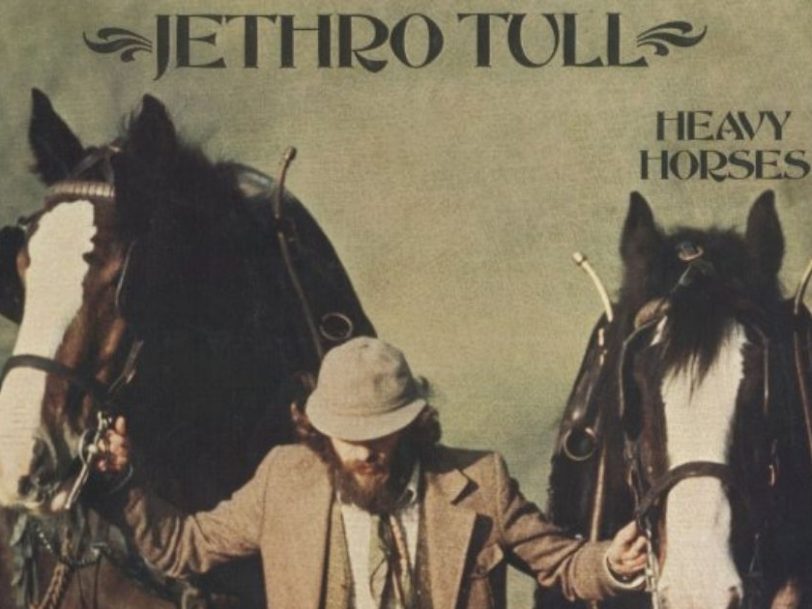Having leapt gracefully into new pastures with their 1977 album, Songs From The Wood, Jethro Tull had successfully cross-bred their prog-rock sensibilities with a folk-rock sound inspired by the myths and fairy tales of medieval England. It was, however, time for another change. After moving to a 15,000-acre estate on the idyllic Isle Of Skye, in Scotland, with his new wife, songwriter Ian Anderson quickly fell in love with the Hebrides and began styling himself as a country squire as he began work on his band’s 11th album, Heavy Horses.
Listen to ‘Heavy Horses’ here.
Withdrawing from the urban trappings of modern life, Anderson began to channel his fondness for the countryside into new songs that had a more down-to-earth feel, expressing his affection for the horses that roamed the land, as well as a wistful reverence for nature. Dedicated to the “indigenous working ponies and horses of Great Britain”, it was clear Heavy Horses would be a completely different beast from what had come before.
“It’s unashamedly about something that was lamenting the passing of an age”
With recording underway at Maison Rouge Studio, in London, in the latter half of 1977, Heavy Horses looked set to keep pace with the same folk-rock gallop of Songs Of The Wood but jettisoned that album’s Elizabethan-era whimsy in favour of a nostalgia of a very different hue. Conscious of how the Industrial Age had spelt the end of a rural way of life, Anderson’s new songs were poetic musings on a bygone era of rustic living. Having proven himself as a keen social commentator on Aqualung and Thick As A Brick, Heavy Horses saw him use animal metaphors to draw analogies with how people live their lives today. “It’s unashamedly about something that was lamenting the passing of an age,” Anderson said of the album.
Heavy Horses’ sole single was Moths, released in March 1978 and fluttering with anthropomorphic imagery and lovelorn lyrics that recall the Romantic poet John Clare (“We soared on powdered wings/Circling our tomorrows/In the wary month of spring”). Dark yet winsome, it touches on the suicidal impulses of moths – and even lemmings – to explore the doomed desires of star-crossed lovers.




